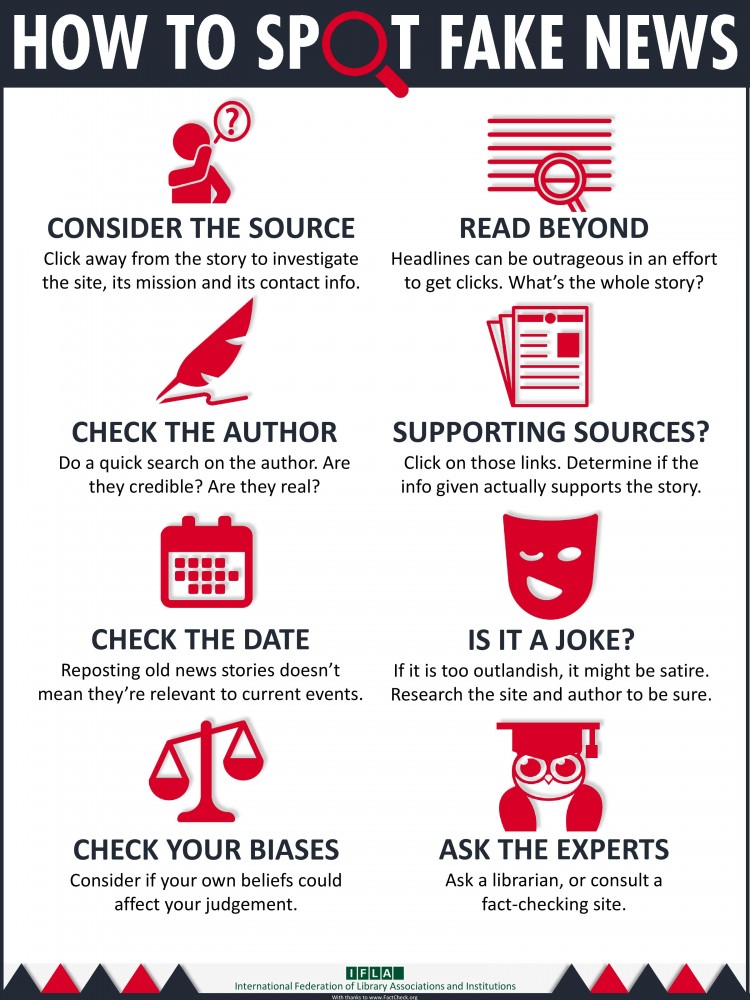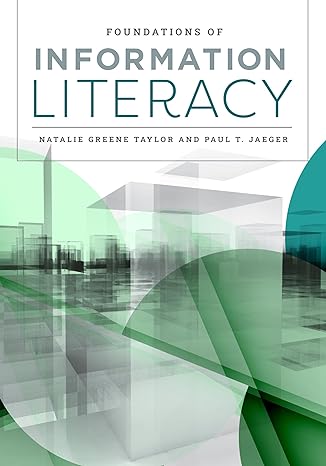What is Fake News?
Fake news is a false story that appears to be news, spread on the internet or using other media, usually created to influence political views or as a joke.
Characteristics of Fake News
- Factually inaccurate
- Optimized for sharing
- Meant to obscure or distort with emotions; preying on prejudice or bias
The Dangers of Fake News
Fake news is created to change people's beliefs, attitudes, or perceptions, so they will ultimately change their behavior. This means if you fall into the trap of believing fake news, your beliefs and your decisions are being driven by someone else’s agenda. Also, in some parts of the world, there can be legal consequences for publishing and sharing fake news.
(Smith, F. (2020, November 11). The dangers of fake news. The Elm. https://elm.umaryland.edu/elm-stories/Elm-Stories-Content/The-Dangers-of-Fake-News.php)
| Subject Keywords | Call Number |
| Journalism. Technique. General works. | PN4775 |
| Journalism. Technique. Fake news | PN4784 |
| Journalism. Special topics | PN4888 |
| Information retrieval (Including information behavior and information literacy) |
ZA3075 |
| Sociology. Social Networks. | HM741 |
| Sociology. Social Networks. Online social networks | HM742-743 |
| Title | Call Number |
| Check that fact | ZA3075 .M644 2021 |
| The anatomy of fake news : a critical news literacy education | PN4888.F35 H54 2020 |
| 假新聞下的媒體認知理論與新聞媒體識讀研究 = A study on media literacy | PN4784.F27 H836 2022 |
| 資訊判讀力 : 腦袋自主!抵抗假訊息、陰謀論、帶風向的生存守則 = A guide to information literacy | ZA3088 .T359 2022 |
| Foundations of information literacy | Online Access |
| Paradoxes of media and information literacy : the crisis of information | Online Access |






